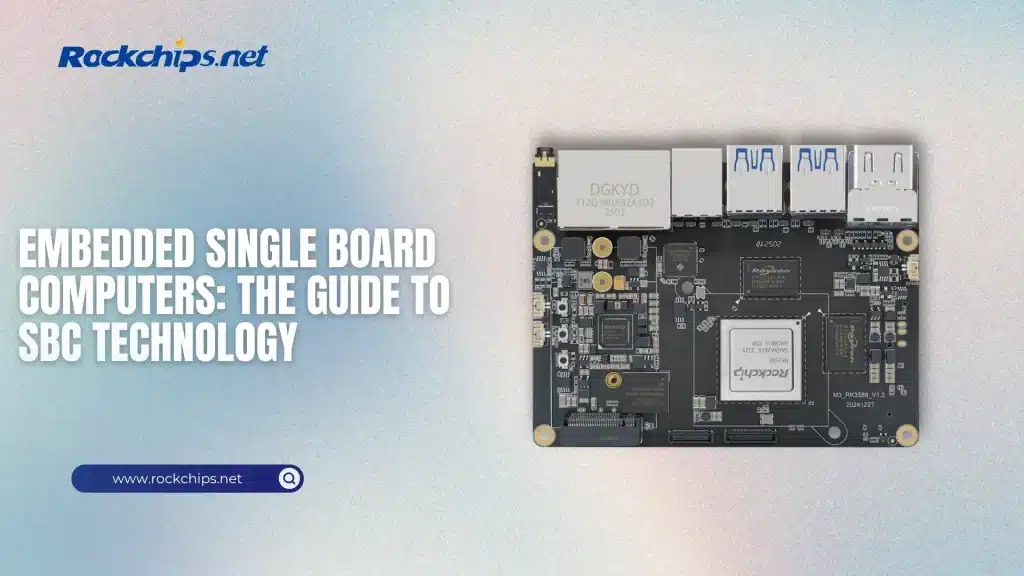
I’m writing about embedded single board computers because they represent one of the most significant technological advancements in compact computing. As a professional engineer, I’ve solved numerous design challenges using these versatile embedded boards, and I want to share my expertise. These compact computing solutions combine processing power, connectivity, and reliability in small form factors, making them ideal for industrial automation, medical devices, transportation systems, and IoT applications. In this comprehensive guide, we’ll explore the technical aspects, selection criteria, and real-world applications of embedded SBC technology.
Understanding Embedded Single Board Computer Architecture
I’m solving the common confusion about what makes an embedded SBC different from regular computer boards. An embedded single board computer is a complete computer built on a single circuit board, designed specifically for dedicated functions rather than general-purpose computing. These embedded boards integrate all critical components – processor, memory, I/O interfaces, and often power management – in a compact, ruggedized package.
Key Components of Embedded SBCs
Every embedded single board computer contains several essential components that determine its capabilities:
- Processor: Ranges from low-power ARM cores to high-performance x86 CPUs depending on application needs
- Memory: Typically includes both RAM and flash storage, often soldered for reliability
- I/O Interfaces: Standard interfaces like USB, Ethernet, GPIO, and often industry-specific ports
- Power Management: Critical for embedded applications where power efficiency is paramount
- Expansion Options: Many boards support PCIe, M.2, or other expansion standards
Form Factors and Standards
Embedded boards come in various standardized form factors to ensure compatibility and scalability:
- COM Express: Popular for industrial applications requiring modularity
- SMARC: Ultra-compact standard for space-constrained designs
- Qseven: Balanced solution offering good performance in small size
- Custom Designs: Many manufacturers like Rockchip offer application-specific configurations
Operating System Support
I’m emphasizing OS options because choosing the right software environment is crucial for embedded applications:
- Linux distributions (Yocto, Ubuntu Core, Debian)
- Real-time operating systems (FreeRTOS, VxWorks)
- Windows IoT and Android for certain applications
- Bare-metal programming for maximum performance
Selecting the Right Embedded Board for Your Application
I’m solving the common problem of choosing among hundreds of available embedded single board computer options. The selection process requires careful consideration of technical requirements, environmental conditions, and long-term support needs.
Performance Requirements
Determining the right performance level involves analyzing:
- Processing power needed for algorithms and data processing
- Memory requirements based on application complexity
- Graphics capabilities for HMI and display applications
- Real-time performance needs for control applications
Environmental Considerations
Embedded boards often operate in challenging conditions:
- Temperature ranges (industrial vs. commercial grade)
- Vibration and shock resistance
- Humidity and corrosion protection
- EMI/EMC compliance for sensitive environments
Connectivity and Expansion
Modern embedded single board computers offer diverse connectivity options:
- Industrial protocols (CAN bus, Modbus, PROFIBUS)
- Wireless options (Wi-Fi, Bluetooth, LoRa, cellular)
- High-speed interfaces (USB 3.0, Thunderbolt, 10G Ethernet)
- Video outputs (HDMI, DisplayPort, LVDS for industrial panels)
Comparison of Popular Embedded SBC Platforms
| Feature | Raspberry Pi CM4 | NXP i.MX 8M | Intel Atom x6000E | Rockchip RK3588 |
|---|---|---|---|---|
| CPU Architecture | ARM Cortex-A72 | ARM Cortex-A53/A72 | x86 64-bit | ARM Cortex-A76/A55 |
| Max Clock Speed | 1.5GHz | 1.8GHz | 3.0GHz | 2.4GHz |
| Memory Support | Up to 8GB LPDDR4 | Up to 4GB LPDDR4 | Up to 32GB DDR4 | Up to 32GB LPDDR4 |
| Typical Power Consumption | 4-10W | 3-8W | 12-30W | 5-15W |
| Industrial Temp Range | Optional | -40°C to +85°C | -40°C to +85°C | -20°C to +80°C |
Applications of Embedded Single Board Computers
I’m solving the question of where these embedded boards provide the most value. Their applications span nearly every industry sector:
- Industrial Automation: PLCs, motor control, machine vision
- Medical Devices: Patient monitoring, diagnostic equipment
- Transportation: Vehicle telematics, autonomous systems
- Smart Cities: Traffic control, environmental monitoring
- Retail: Digital signage, POS systems
For more background on SBC technology, see this Wikipedia article on single-board computers. To understand the broader context, the embedded systems overview provides useful foundational knowledge.
Conclusion: The Future of Embedded Computing
I’m summarizing the key points about embedded single board computers because their importance continues growing across industries. These compact yet powerful embedded boards offer the perfect balance of performance, reliability, and energy efficiency for modern applications. As IoT and Industry 4.0 advance, embedded SBC technology evolves with more powerful processors, better connectivity options, and enhanced security features. Whether you’re designing a simple monitoring device or a complex autonomous system, there’s an embedded single board computer solution that fits your technical requirements and environmental constraints.